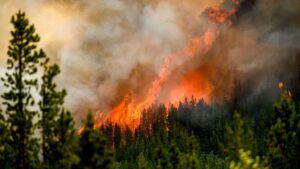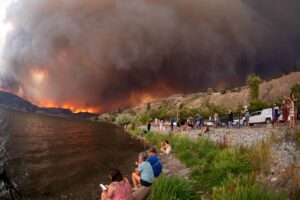 As wildfires rage across Manitoba, Saskatchewan, and British Columbia this season, thousands of residents are fleeing their homes while entire communities brace for destruction. These fast-moving fires highlight a dangerous reality: Canada is building and rebuilding homes in the very zones most likely to burn.
As wildfires rage across Manitoba, Saskatchewan, and British Columbia this season, thousands of residents are fleeing their homes while entire communities brace for destruction. These fast-moving fires highlight a dangerous reality: Canada is building and rebuilding homes in the very zones most likely to burn.
With cities expanding deeper into forested regions, the critical buffer between human development and wildland vegetation is shrinking. This narrowing zone not only increases the chances of fires igniting homes but also reduces the natural barriers that once protected communities from flames. As a result, wildfires that were once distant, rural threats are now regular hazards in suburban neighborhoods.
This troubling pattern is amplified by climate change, which fuels longer droughts, hotter temperatures, and more intense fire seasons. Despite these warnings, housing development continues to spread into fire-prone areas, creating a dangerous overlap between human life and wildfire risk.

Yet, fire risk is still not treated as a central design challenge in the way earthquake or wind resilience is. While structural designs in cities like Vancouver or San Francisco account for seismic activity, and flood-prone zones like Winnipeg have built defenses against water damage, fire protection remains governed by outdated and overly simplistic building codes. Most homes are still constructed from combustible materials, such as exposed timber, and lack features like fire-resistant walls or metal roofing.
Advances in materials—like high-performance concrete and fireproof roofing—exist but are not yet standard in residential construction. Meanwhile, new community-wide planning strategies, including firebreak landscaping and non-combustible property buffers, remain the exception rather than the rule.
A risk-averse, science-based approach to design is urgently needed. Communities such as Jasper, Alberta, which suffered devastating fires last year, are already seeing federal guidelines that require wider separation between buildings and the removal of flammable landscaping. But across much of the country, development standards have not caught up with the escalating danger.
Programs like FireSmart Canada provide practical guidance on fire-resistant landscaping and home protection, but these voluntary measures are not enough. A shift in public awareness, stronger local zoning regulations, and mandatory building codes are critical if neighborhoods are to survive future wildfire seasons.
Developers, builders, and suppliers must also adapt—incorporating safer construction materials and methods as standard practice. But progress depends on prioritizing research and funding into how fires behave once they reach urban zones, where fuel types, air patterns, and spread differ drastically from forest fires. Without this knowledge, designing truly fire-resistant cities remains out of reach.
The stakes could not be higher. The cost of inaction—lost lives, destroyed homes, and billions in rebuilding expenses—far outweighs the price of proactive change. With wildfires now a regular feature of Canadian summers, urgent investment in resilient design, smarter urban planning, and robust fire research is the only path to safeguarding future generations.
